How to store turnips from the garden to maximize your crop
Wondering how to store turnips from the garden? These tips will help you enjoy a bountiful crop of root veg throughout the season


Learning how to store turnips from the garden properly will help you make the very most of your harvest. There are a few different methods, depending on what storage facilities you have at your disposal.
Turnips can be harvested in two ways: either for the root and leaves together, or just for the turnip itself. Whatever your preference, they make a fantastic addition to your vegetable plot.
Storing turnips in a box is the most popular method, either in a cool, dark place or in the fridge. Prepping your turnips for this is a simple process. But, if you have too big a harvest to collect all at once, you can store your turnips in situ by leaving them underground. You'll need to make sure they're protected from the cold outdoors, though.
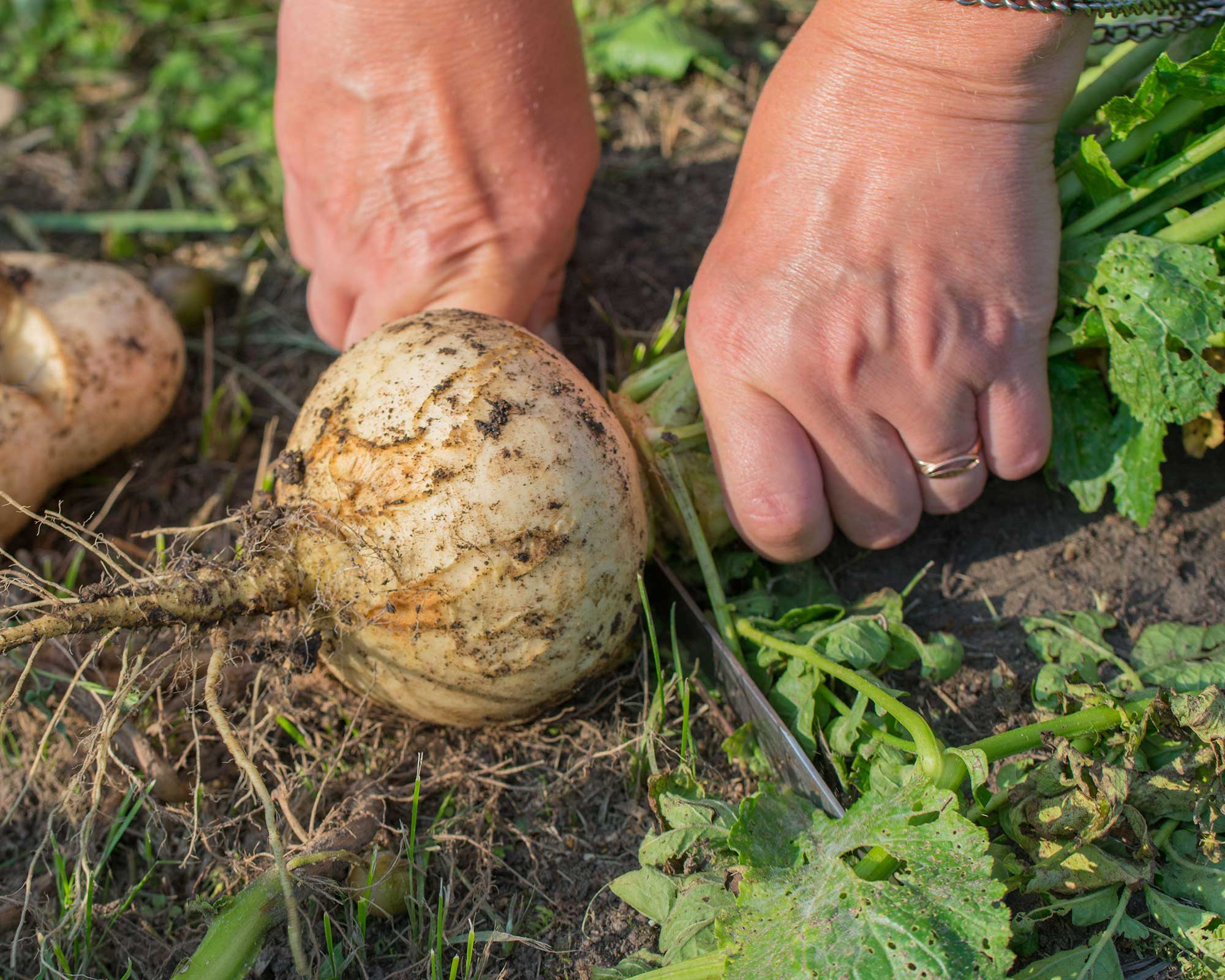
Remove the turnip greens before storing the vegetables in a box
How to store turnips in a box
If storing your turnips in a box, the main aim is to keep them cold, at a temperature of around 32-40°F (0-4°C).
Kate Watkinson from Burpee Europe gives us her top tips for turnip preparation and storage:
- First, the greens should be cut off close to the base of where they grow, as keeping the leaves on can make the vegetable rot while in storage.
- Brush and shake the earth off the turnip. Using a vegetable brush (try Amazon) with running water will help remove all traces of soil. Make sure you dry the turnips off afterward.
- Place the dry turnips in a box or a bucket lined with straw in a very cold, dark place. Somewhere like a cool cellar or basement is ideal.
- If you're keeping turnips in the refrigerator, it's recommended to cover them with a damp cloth and place them inside a perforated plastic bag. Put them in the vegetable crisper drawer and they'll keep for four to five months.
You can also store your turnips for up to six months in layers of moist (not wet) sand, as this helps to prevent them from drying out.
Also known as a sand clamp, this method involves placing a layer of damp sand on the bottom of a container, then laying the turnips on top, ensuring they're not touching each other. Repeat the layering system until you've added all the turnips, then cover fully with a final layer of sand.
Sand clamps – which can be created either indoors or outdoors – work with other root vegetables, too. For instance, you can also store carrots from the garden in this way. Though bear in mind that this method can attract pests.
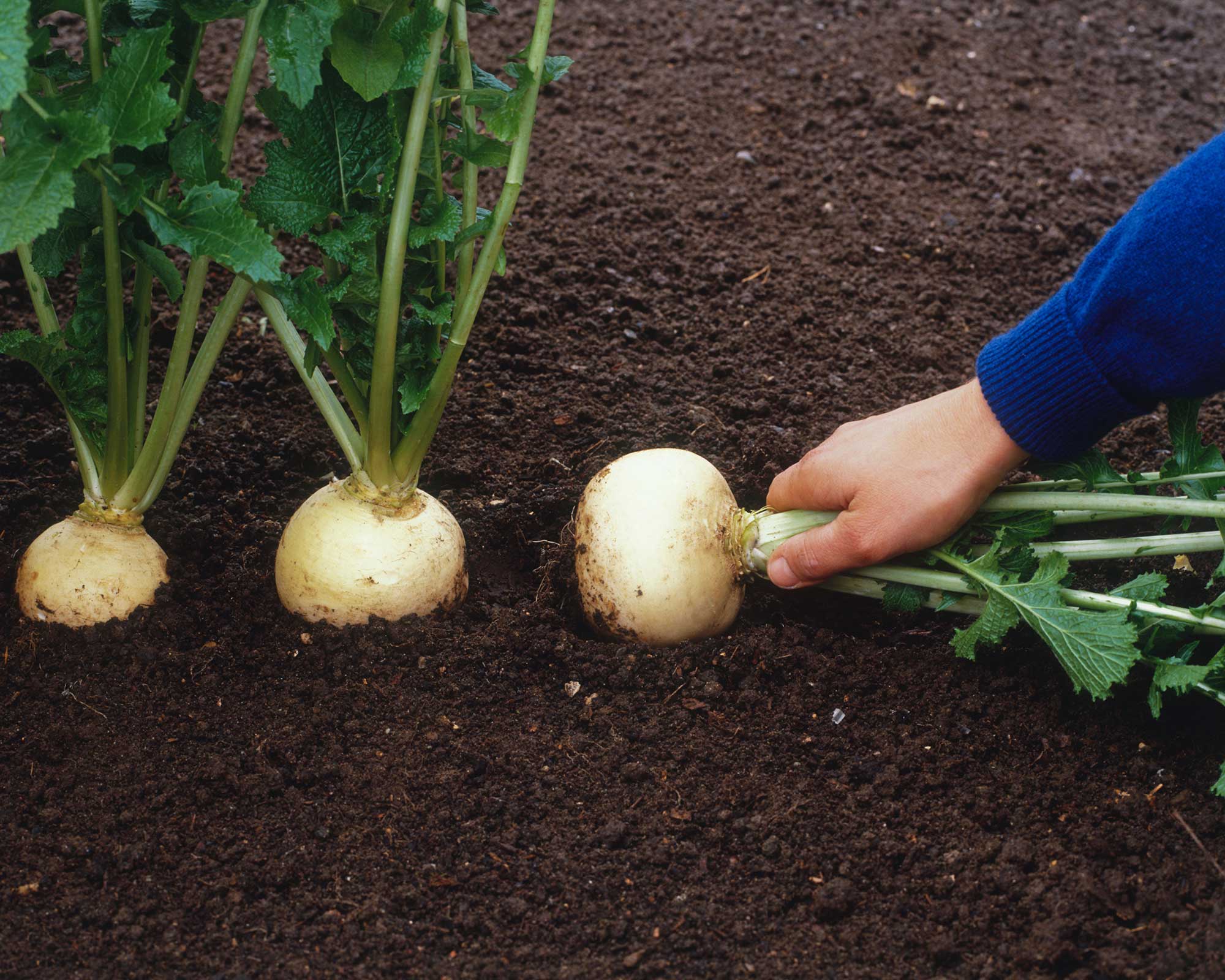
Turnips can be kept in the ground with a little protection
How to store turnips in the ground
As long as you provide adequate protection against freezing conditions, turnips are happy to stay in the ground as an overwintering crop. Like beetroot and carrots, turnips can actually turn a little sweeter in cold temperatures, with the plants' starches converting to sugar.
The RHS suggests covering the crops with a 6in (15cm) layer of either straw or bracken to provide sufficient insulation, though indoor storage may be a better approach in the coldest regions.
Make sure to harvest before spring begins though: if turnips are left too long they'll become fibrous, tough, and unappealing to eat.
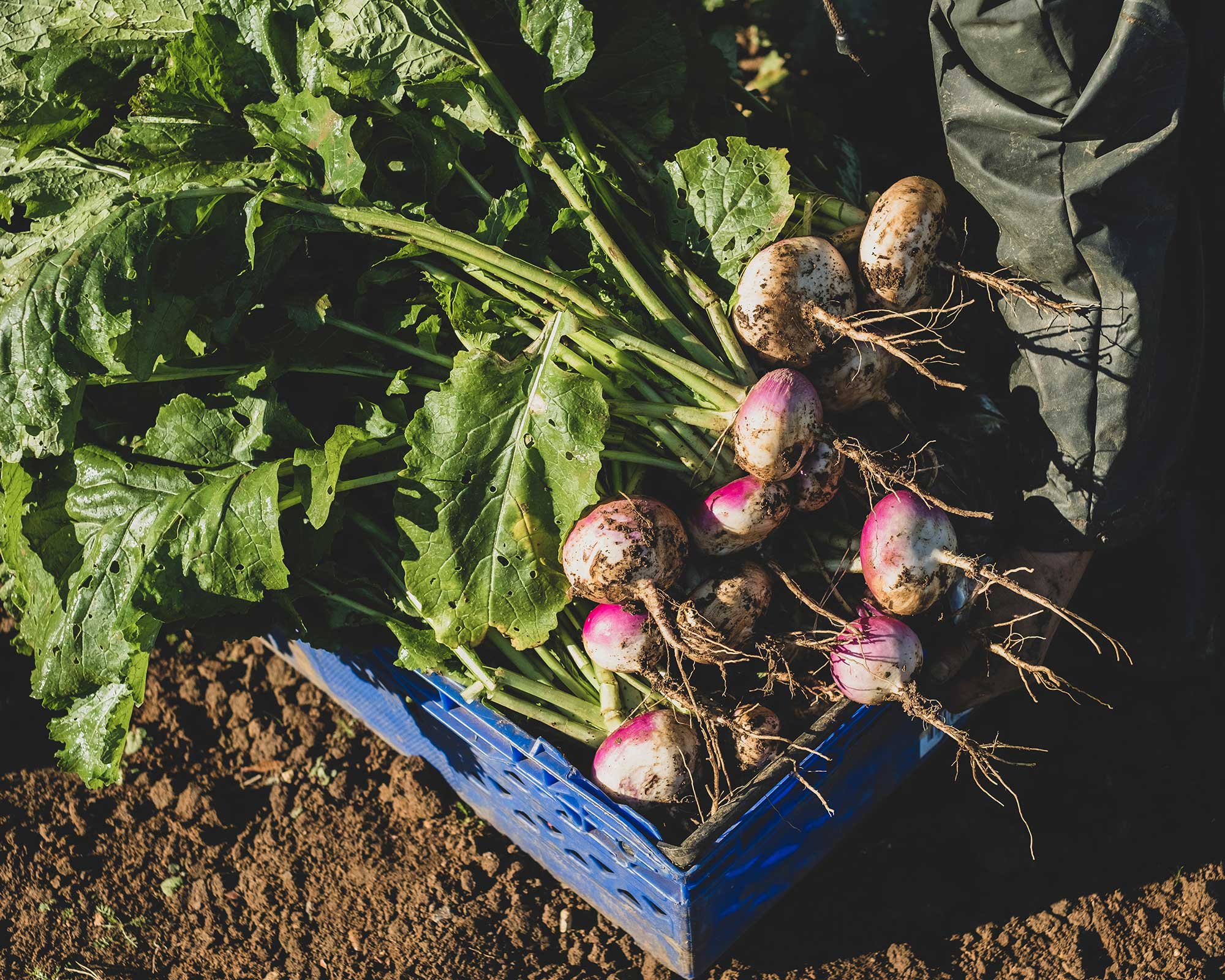
Harvest turnips with their green tops when they're two inches in diameter
When is the best time to harvest turnips?
As well as knowing how to store turnips properly, you'll also need to know how and when to harvest the vegetables for the best results.
Rachel Morgan, a horticulturist at Yougarden, explains that the best time for harvesting a turnip root is controlled by the specific variety and your growing conditions.
'Plants that grow in less-than-ideal conditions will take longer to mature,' Rachel says. 'If you are harvesting turnip greens, this will also reduce the speed of the root production and they will take longer before harvest.'
Turnip greens and the actual vegetable can be harvested together or separately. For the former, Rachel suggests pulling a bunch together with the leaves and stems intact. These turnips are best taken when they are about two inches in diameter.
The other option is to harvest turnips that have been 'topped', which means the greens are already removed. For this, the turnips would be pulled and harvested when three inches in diameter, so slightly bigger.
It's worth bearing in mind that turnips pulled at a smaller size will generally taste sweeter.
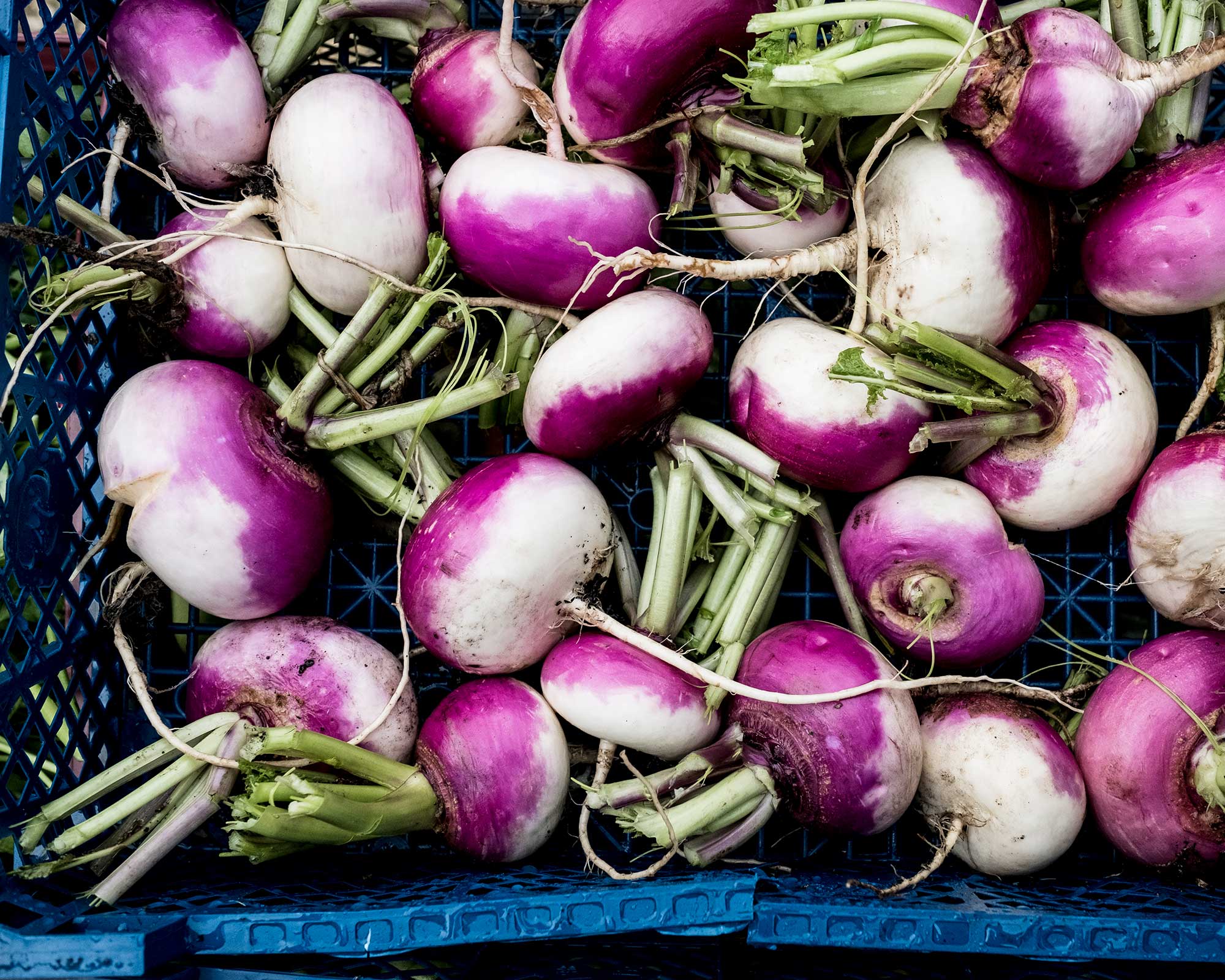
Store your turnips properly to help them last
What do you do with turnips from the garden?
Turnips are a really versatile root vegetable in the kitchen, as Kate Watkinson from Burpee Europe explains. 'They are full of nutrients, so something to most certainly include as part of your diet,' she says.
You can add them to any dish where you'd include potatoes, like hearty stews and winter vegetable soups.
Turnips also freeze really well, and you can prepare them in plenty of ways before freezing them: the most common options include roasted, diced and mashed.
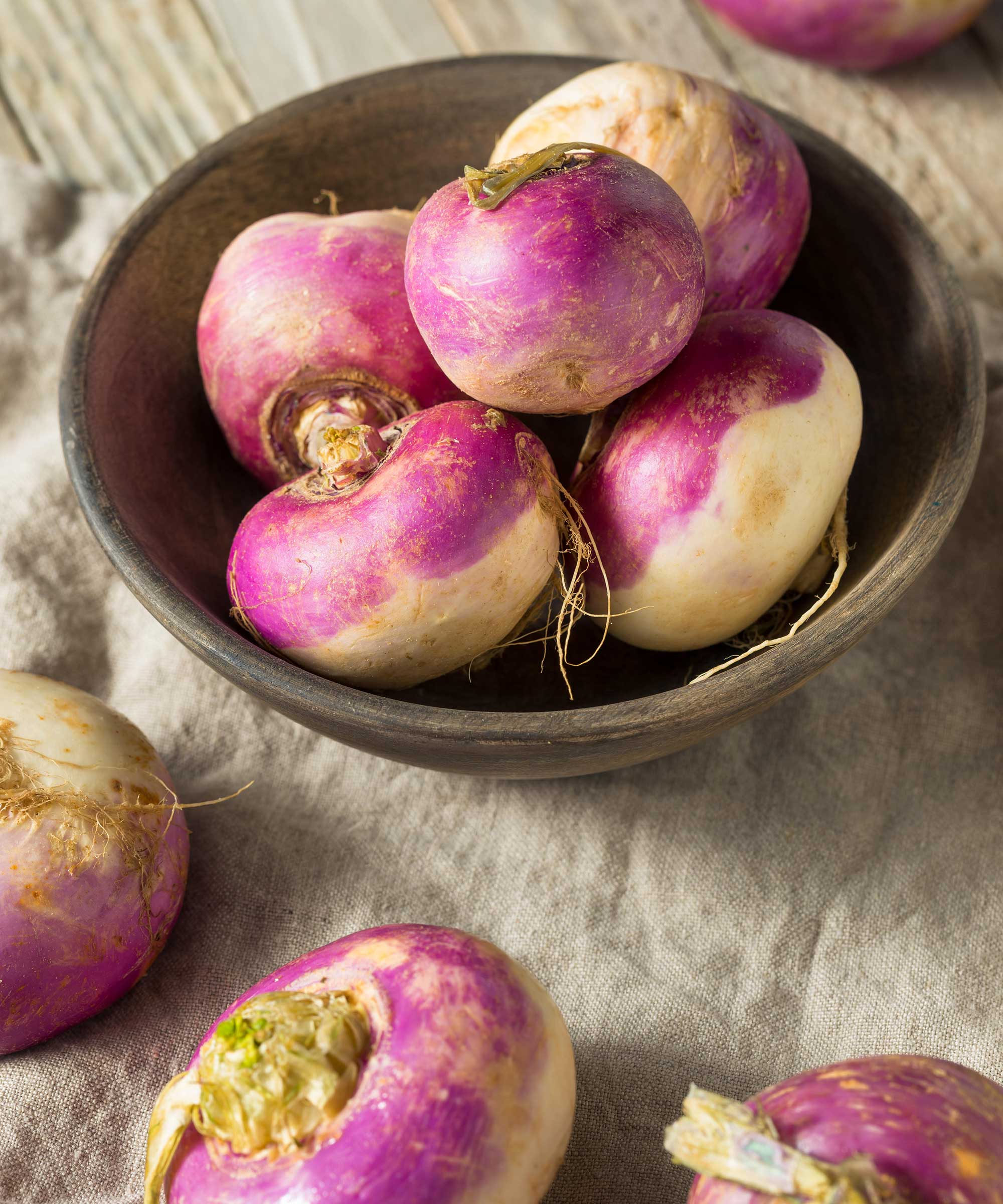
Turnips are a versatile vegetable in the kitchen

Freelance writer and author Flora Baker is a keen amateur gardener and houseplant enthusiast. Her small garden in South London is a constant work in progress as she gets to grips with snail prevention, DIY trellises and what to plant in shady spots overrun with ivy.
